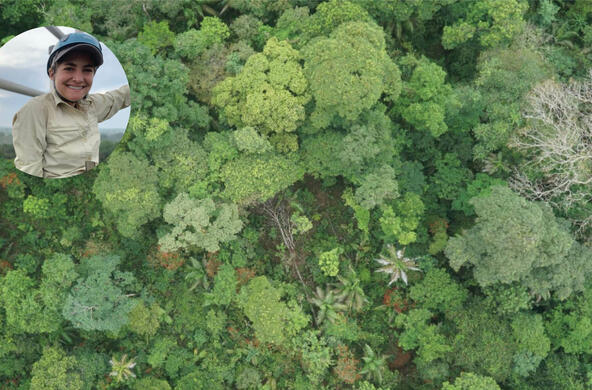The fire in Minnewaska State Park last month, which burned more than 3,000 acres, is a reminder of how difficult it can be to control wildfires. But for more than a century, we have been extraordinarily successful at doing just that. The Hudson Valley is not unique in this regard - fire suppression has been a guiding principle of land management across the country.
But fire suppression can backfire. In some forests it allows accumulation of fuels to levels that eventually lead to catastrophic fires. This has been the case in many areas of the western United States in recent years. Closer to home, it is clear that fires play an important role in the ecology of the pine barrens of the Shawangunk Ridge, and that finding ways to manage fires, rather than eliminate them, is important for both conservation and public safety.
It is much less widely recognized that fires played an important role in the history of forests throughout the Hudson Valley, and that fire suppression has led to inevitable and probably irreversible changes in our forests. Historical records from the 1700s provide us with a snapshot of our forests during the first major wave of land clearing. When subdividing land to sell to settlers, early landowners marked the corners of parcels by recording the identities and sizes of nearby "witness" trees.
The story told by the witness trees has been repeated up and down the east coast of the US. The oaks that dominated many pre-settlement forests have declined dramatically. Over 250 years ago, almost 80 percent of the trees in the Cary Institute's forests were oaks; their numbers have been reduced by more than half. Maples, which were almost nonexistent in the 1700s, now make up 40 percent of the trees in our forests.
Ecologists attribute most of this transformation to fire suppression. It has been argued that Native Americans deliberately set fires to open up the forests and improve game habitat. Regardless of the motive or intent of Native Americans, early European explorers and botanists made frequent mention of fires in the forests of southern New England.
In our region, oak species have thick bark that allows trees to survive low-intensity ground fires. In contrast, red maple and sugar maple have thinner bark that makes them vulnerable to fire. Oak seedlings and saplings also need lots of light to thrive, and periodic ground fires are thought to have maintained an open forest canopy. Once established, the shade-tolerant sugar maples with their dense canopies shade out the oaks.
But unlike the pine barrens of Minnewaska, where fire suppression leads to accumulation of highly flammable fuel, something very different is happening in our oak forests. Spring is fire season in the Hudson Valley because of the unique properties of oak leaves. They have very low concentrations of nitrogen, and as a result, are very slow to decompose over winter. Come spring they make excellent fuel for a wildfire.
Maple leaves decompose much more rapidly over winter. By spring, little is left to carry a fire along the forest floor. As the maples displace oaks under the protection of active fire suppression, we are creating forests that become progressively less susceptible to fire.
Land managers did not set out to transform oak forests to maple forests, but our management of natural ecosystems is rife with unintended consequences. A harder lesson to learn is that it is very difficult to go back in time.
The pine barrens of Minnewaska are biologically unique, and deserve the preservation that can only come from restoring "natural" fire regimes. In most other forests in the Hudson Valley, there is no clear ecological justification for turning the clock back to 1750.
Fire - once arguably the dominant ecological process in our landscape - has effectively ceased to be a factor in our forests, and has been replaced by forces such as climate change, air pollution and introduced species.







